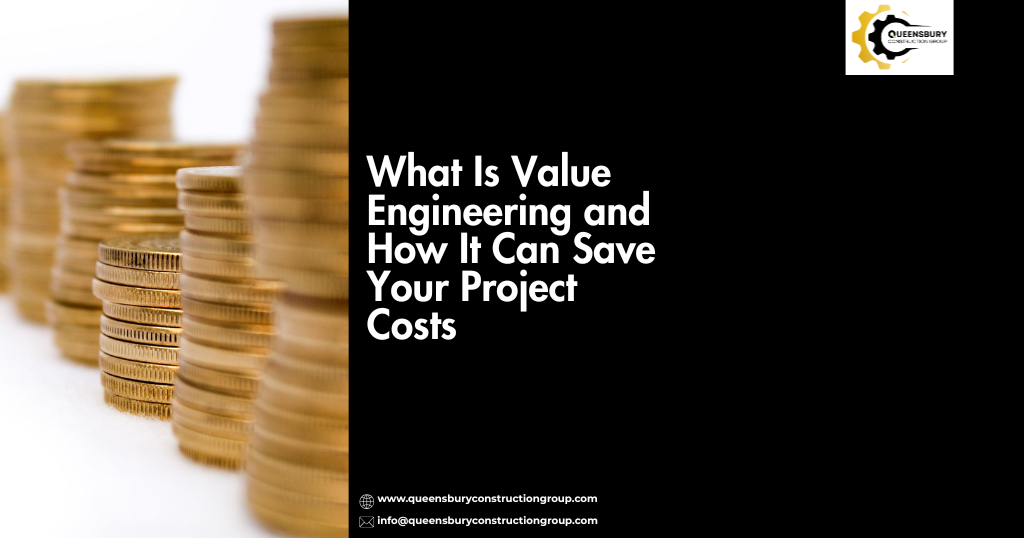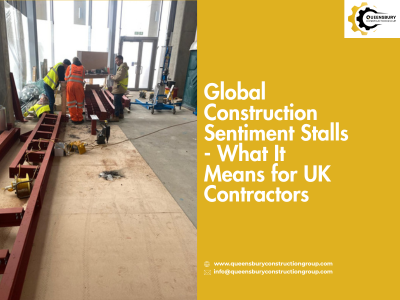 A partner you can trust
A partner you can trust
Stay informed with expert insights, industry trends, and the latest updates to help you make informed decisions.

Construction costs can escalate quickly. Materials rise in price. Labour shortages cause delays. Design changes introduce new expenses.
One way to keep your project within budget without sacrificing quality is through value engineering.
Value engineering is a structured process used in construction to reduce project costs by reviewing designs, materials, and methods while still meeting the same performance goals.
The aim is not to cut corners. Instead, it focuses on delivering the required function at the lowest total cost.
Think of it as reviewing the "how" behind every part of your build, then finding more innovative, more cost-conscious alternatives.
The core concept of value engineering is simple: achieve the same result for less by reviewing and challenging every component of the design.
This process is often carried out during the design stage and involves input from contractors, engineers, and cost consultants. It may also happen post-tender, when costs come back higher than expected.
Each element is assessed against three key questions:
For example, if a suspended ceiling is specified throughout, but only half the space requires acoustic control, you may propose to remove it in non-critical areas.
The outcome? Savings without affecting the design intent.
In practice, value engineering to reduce costs involves replacing expensive elements with more practical alternatives that do not compromise function, durability, or appearance.
Common value engineering examples include:
Rather than focusing on the lowest cost, the process aims for the best balance of price, performance, and buildability.
Value engineering plays a key role in shaping decisions that affect cost, programme, and quality, especially during the early stages of a commercial fit-out or refurbishment.
Here's how:
The key is applying it at the right time, with the right level of detail. Bringing in experienced contractors early provides practical insight that paper designs alone cannot offer.


When done correctly, value engineering yields both short-term and long-term benefits. These include:
1. Cost Savings
The most obvious benefit is the reduction in capital expenditure. Even a 5–10% saving on a project can free up funds for other uses, such as upgraded finishes in high-visibility areas.
2. Greater Buildability
Some designs look good on paper but create issues during construction. Value engineering can identify these early and propose buildable alternatives that expedite delivery.
3. More Predictable Maintenance
Material choices affect not just upfront costs but long-term upkeep. Swapping fragile finishes for durable alternatives reduces maintenance costs over time.
4. Design Clarity
During the review, design details are scrutinised. This often leads to better-documented specifications and fewer RFIs during construction.
5. Flexibility
Reworking layouts or component systems can provide a more flexible space, allowing you to adapt to future business needs without incurring further costly fit-outs.
Let's examine a real-world scenario involving a warehouse-to-office conversion.
The original design included a bespoke timber reception desk, recessed lighting throughout, and polished concrete flooring.
During the value engineering review:
These changes delivered a £38,000 saving on a £300,000 project. The client still achieved the same visual result where it mattered most, with no impact on layout or compliance.
While value engineering can provide real benefits, there are limits.
Timing Is Critical
If you leave value engineering until construction has started, changes become more difficult. Designs are fixed, materials are ordered, and changes can cause delays.
Not Every Substitution Works
Some substitutions may appear appealing but fall short in terms of performance or durability. The team must review impacts across the full life cycle of the building.
Coordination Is Required
Changes to one element (e.g., lighting) can impact other systems (e.g., ceilings, mechanical and electrical layouts). It takes time and coordination to make adjustments without creating new issues.
Design Intent Can Drift
If cost savings dominate the discussion, the final space may look and feel different from what was initially intended. That's why both design and client teams should agree on decisions.
Queensbury Construction Group collaborates with businesses, developers, and consultants to deliver fit-outs and construction projects that deliver results both financially and operationally.
Our value engineering process helps reduce cost without reducing quality. We provide practical advice that balances cost with buildability, function, and design.
If you're reviewing plans or facing budget pressures, we can help you make confident decisions.
Contact us to discuss your project with our team.




tackling everything from changes in planning policy to home renovation advice
Contact Us
Leave A Comments